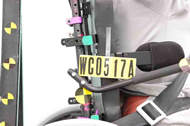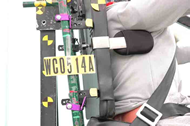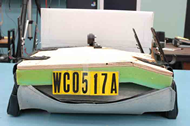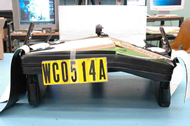29th Annual RESNA Conference Proceedings
Validation of a Surrogate Wheelchair Base for Evaluation of Wheelchair Seating System Crashworthiness
Nichole L. Ritchie1, Miriam A. Manary1, Gina Bertocci2, Lawrence W. Schneider2
1University of Michigan Transportation Research Institute
2Departments of Mechanical Engineering, University of Louisville
ABSTRACT
Although ANSI/RESNA WC/19 establishes design and performance requirements for complete wheelchairs, a method to evaluate seating systems independent of specific wheelchair frames is needed. A surrogate wheelchair base (SWCB) was therefore developed for the purpose of generically evaluating the crashworthiness performance of wheelchair seating systems. To validate seating system performance obtained using the SWCB, twelve frontal-impact sled tests were conducted using samples of six different commercial seating systems installed on the SWCB and on a manual commercial wheelchair base. The results show similar patterns of seating system failure for the SWCB and commercial wheelchair bases, with a tendency for testing with the SWCB to produce more failures and/or more severe failures than testing with a commercial base.
KEYWORDS
Wheelchairs, seating systems, surrogate wheelchair base, transportation, wheelchair safety
BACKGROUND
For wheelchair users who travel seated in their wheelchairs in motor vehicles, the crashworthiness of the wheelchair and its seating system are key to effective protection in a crash. ANSI/RESNA WC/19 Wheelchairs for Use in Motor Vehicles (WC/19) has established design and performance requirements and associated test methods to evaluate the 48-kph, 20- g frontal-impact performance of occupied, forward-facing wheelchairs when secured by a four-point, strap-type tiedown (1). As currently written, WC/19 only applies to complete wheelchair systems, including a base and seating system. However, many wheelchair seating systems are used on a wide range of wheelchair bases and many wheelchair bases are purchased with the intent of using a seating system from another manufacturer or seating company. These issues of service delivery have led to the need for a means to evaluate the crashworthiness of wheelchair seating systems independent of a specific wheelchair base. To accomplish this, a surrogate wheelchair base (SWCB) was developed to provide a means for conducting a generic frontal-impact sled test that will subject an occupied wheelchair seating system to dynamic loads that are representative of worst-case loading that would be produced in the frontal-impact test of Annex A of WC/19 using a range of commercial bases.
The SWCB is a reusable device with a nominal mass of 48 kg (106 lb). It has been designed with interchangeable cross-brace frames that allow the overall width to be varied to accommodate various sizes of seating systems, and with adjustable foot rests that enable it to be used with different sizes of anthropomorphic test devices (ATDs). The seat rails and seatback posts are replaceable to accommodate various types and sizes of seat attachment hardware, and deformable and interchangeable seatback-attachment elements allow for varying seatback stiffness. Finally, deformable caster mounting bars provide for front-end deformation of the SWCB during downward loading, which is common in commercial frame structures. Key specifications for the SWCB are provided in Annex B of draft standard Section 20, ANSI/RESNA Volume 4, Seating Devices for Use in Motor Vehicles (2).
OBJECTIVES
The objective of this study was to determine if frontal-impact testing of wheelchair seating systems installed on the SWCB produces representative worst-case seat loading conditions and failures modes obtained when seating systems are installed and tested on commercial wheelchair bases using the test methods in Annex A of WC/19.
METHODS
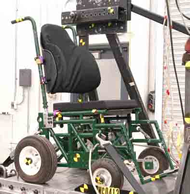
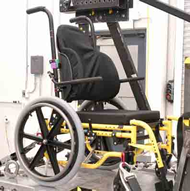 Figure 1a & 1b d (Click images for larger view)
Figure 1a & 1b d (Click images for larger view)
All frontal-impact sled tests were conducted using a 48 kph (30 mph), 20- g crash pulse in accordance to Annex A of WC/19, and with a 76.4 kg (170 kb) Hybrid III midsize male ATD installed on the seat. Samples of six commercial seating systems, including three planar seats, two contour seats, and one fabrics/sling seat, were installed and tested on the SWCB, as shown in the left side of Figure 1 for a contour seat. Six identical samples were installed and tested on a commercial manual wheelchair base that complies with WC-19 requirements for wheelchair securement, as shown in the right side of Figure 1. In both installations, the seating systems were attached to the SWCB seat rails and seatback posts using components and fasteners provided by the seating manufacturer. For each test, the complete wheelchair system was secured facing forward on the sled platform using the surrogate four-point, strap-type tiedown system specified in Annex D of WC/19, and the ATD was restrained by a surrogate, vehicle-anchored three-point belt. Two side-view high-speed video cameras were used to document wheelchair and ATD forward and rebound excursions and kinematics during each test.
 Figure 2. d (Click image for larger view)
Figure 2. d (Click image for larger view) Upon completion of each test, the seating system was inspected and photographed to determine and document whether it complied with WC/19 and proposed WC/20 performance criteria. In particular, it was noted if the seat or seating system detached from the seat rails or seatback posts at any attachment points, whether there were any failures of seating system attachment hardware, and whether there were any partial or complete failures of primary seat or seatback structural components, including cracks in layers of plywood.
RESULTS
Figure 2 shows time sequenced images from the high-speed videos that provide a side-by-side comparison of the forward ATD kinematics and excursions for planar seat B tested on the SWCB and commercial base. In all tests the wheelchair bases were effectively secured by the four-point tiedown and remained upright on the sled platform with minimal frame deformation. Also, the ATD was effectively restrained during forward movement so that the peak head and knee excursions were below the maximum excursion limits allowed by WC/19. Table 1 summarizes the test results with regard to the performance of the seating systems and their attachment hardware, while Figures 3 through 6 show examples of typical seating system results from planar seating system B tests on both types of bases. From the data in this table it can be seen that the patterns of types and severities of seating system failures are similar for tests conducted on the surrogate and commercial bases for all seating systems. In addition, where there are differences, the test using the SWCB always resulted in a greater number and/or more severe seat failure than the test on the commercial base. Five of the six seating systems showed one or more signs of failure when tested on the SWCB whereas four of these five seating systems showed one or more signs of failure when tested on the commercial wheelchair base. The mechanisms of seating-system detachment were similar for tests on both bases with most being due to sliding of the attachment hook along the seat rail or seatback post so that it came out of the retention bracket.
| Seating System | Wheelchair Base | Points of Seatback Detachment | Other Seatback Structural Failures | Points of Seatpan Detachment | Other Seatpan Structural Failures |
| Planar Seat A | Surrogate |
0 |
None |
1 |
Fracture in lower layer of plywood |
Commercial |
0 |
None |
0 |
None |
|
| Planar Seat B | Surrogate |
3 |
None |
4 |
Complete fractures of plywood in seatpan and lateral thigh supports |
Commercial |
3 |
None |
0 |
Complete fractures of plywood in seatpan and lateral thigh supports |
|
| Planar Seat C | Surrogate |
0 |
None |
2 |
Complete fracture of plywood seatpan |
Commercial |
0 |
None |
0 |
Complete fracture of plywood seatpan |
|
| Contour Seat A | Surrogate |
2 |
None |
3 |
None |
Commercial |
1 |
None |
1 |
None |
|
| Contour Seat B | Surrogate |
3 |
None |
4 |
Plastic fractured near left-front attachment hardware |
Commercial |
2 |
None |
4 |
None |
|
| Fabric Seat A | Surrogate |
0 |
None |
0 |
None |
Commercial |
0 |
None |
0 |
None |
DISCUSSION AND CONCLUSIONS
The wheelchair seat is a critical part of the occupant-protection system when a wheelchair user remains in their wheelchair during transportation in a motor vehicle. In particular, it is important for the seat to remain attached to the seat base and for it to offer effective seat and back support for the occupant during impact loading, so that the belt restraints will remain properly positioned on the pelvis and shoulders, and so that the occupant will not move rearward into vehicle interior components or other occupants.
Because of the manner in which wheelchair seating systems are marketed and used on a wide range of wheelchair bases, there has been a need to be able to evaluate the crashworthiness performance of wheelchair seating systems without testing them on every wheelchair base. The SWCB was developed to provide a nominal test platform for conducting crashworthiness performance tests of wheelchair seating systems in a manner comparable to the frontal-impact test of WC/19 for complete wheelchair seating systems. The results of the test matrix described in this paper validate the SWCB for this purpose by demonstrating that wheelchair seating systems are subjected to similar, but somewhat worst-case, loading conditions when tested on the SWCB than when tested on a commercial wheelchair base.
When implemented in WC/20, the SWCB and the associated test methods will provide wheelchair and seating manufacturers with a test method that can be used to certify their seating systems and attachment hardware for general use on a wide range of wheelchair bases. It may, however, be necessary for manufactures to conduct more than one test of the same seating system to account for differences in the types and sizes of frame rails and/or seatback posts to which the seating system may be attached, and to evaluate different types of attachment hardware and mechanisms. Manufacturers may also wish to continue testing their seating systems on some commercial wheelchair bases to further validate the crashworthiness of their seating systems and to gain confidence with the results obtained using the SWCB. Results of such tests will provide additional data for validating the SWCB and its test methods for a wider range of seating systems and commercial bases.
REFERENCES
- American National Standards Institute/Rehabilitation Engineering and Assistive Technology Society of North America (ANSI/RESNA). (2000). Section 19 ANSI/RESNA WC/Volume 1: Wheelchairs Used as Seats in Motor Vehicles . Arlington, VA.
- RESNA Committee on Wheelchairs and Transportation (2005). Draft ANSI/RESNA Wheelchair Standard Volume 4 Wheelchairs Used in Motor Vehicle Transportation: Section 20 - Seating Devices for Use in Motor Vehicles .
ACKNOWLEDGEMENTS
This study was funded by the National Institute on Disability and Rehabilitation Research (NIDRR) and the Rehabilitation Engineering Research Center (RERC) on Wheelchair Transportation, grant # H133E010302. The opinions expressed herein are those of the authors and do not necessarily reflect the opinions of NIDRR. The authors would like to thank Nathaniel Madura, Stewart Simonett and Charlie Bradley for their diligent efforts.
Nichole L. Ritchie
Biosciences Division
University of Michigan Transportation Research Institute
2901 Baxter Road
Ann Arbor, MI 48109
(734) 936-1107
This should be in the right column.
